
We’re half a month into the new year and northern Japan is in the grips of a cold wave. The Yokohama area, on the other hand, has seen mild temperatures and blue skies (see photo above). This year too, we will try to explain the seasonal predictions of our forecast model in simple terms. So, what’s in store for spring?
According to the SINTEX-F model, surface air temperature will be above normal in many parts of the world. Conditions in the tropical Pacific and Indian Ocean will revert to average. Off northwestern Australia, on the other hand, ocean temperatures are expected to become warmer than average, a phenomenon known as Ningaloo Niño. Let’s take a closer look.
Air temperature and rain forecast for the period March through May
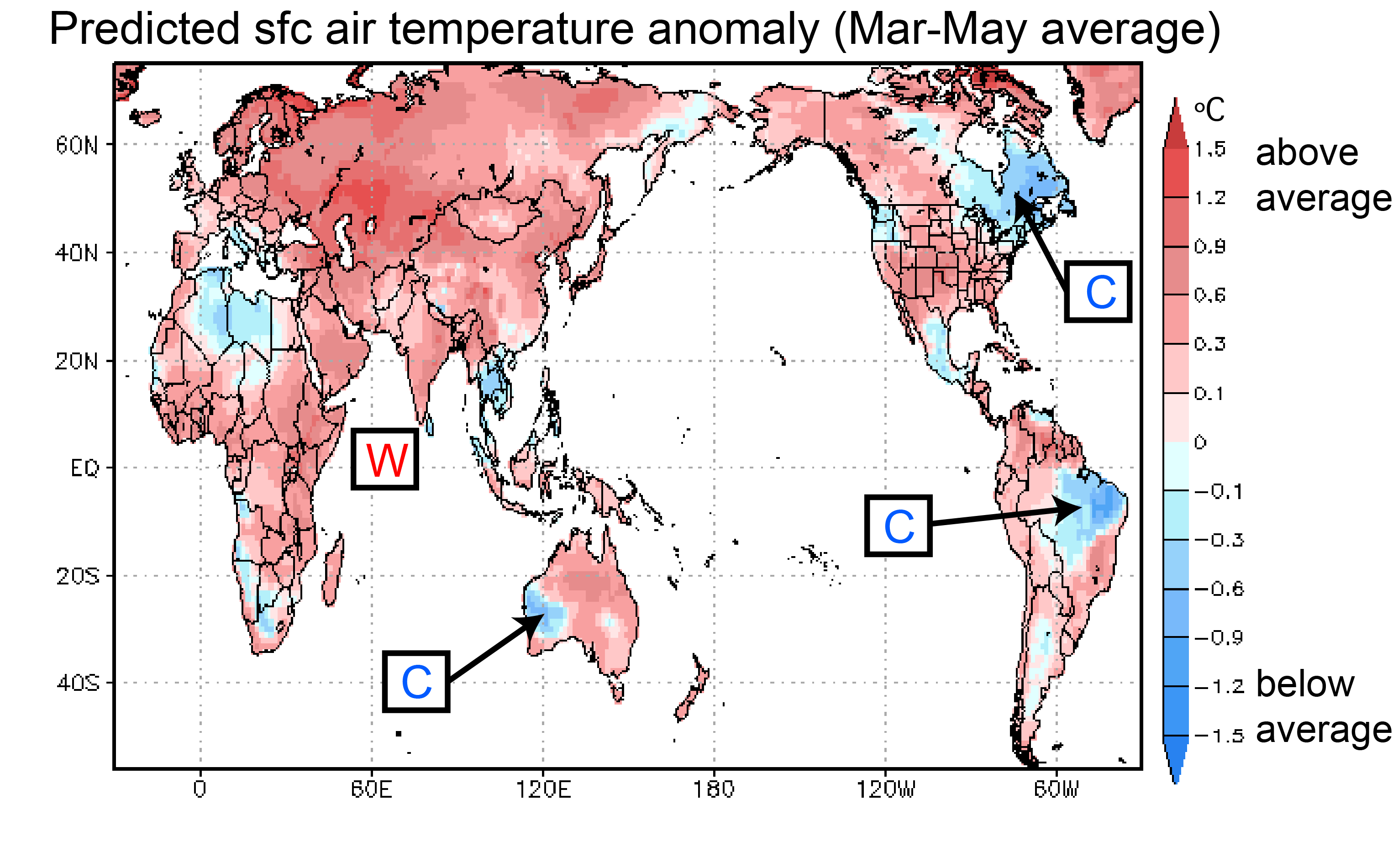
The surface air temperatures for the period March through May (the meteorological definition of spring) are expected to be warmer than average in many areas of the world (Fig. 1). Some exceptions are eastern Canada, northern Brazil, and western Australia, where temperatures are expected to be cooler than average.
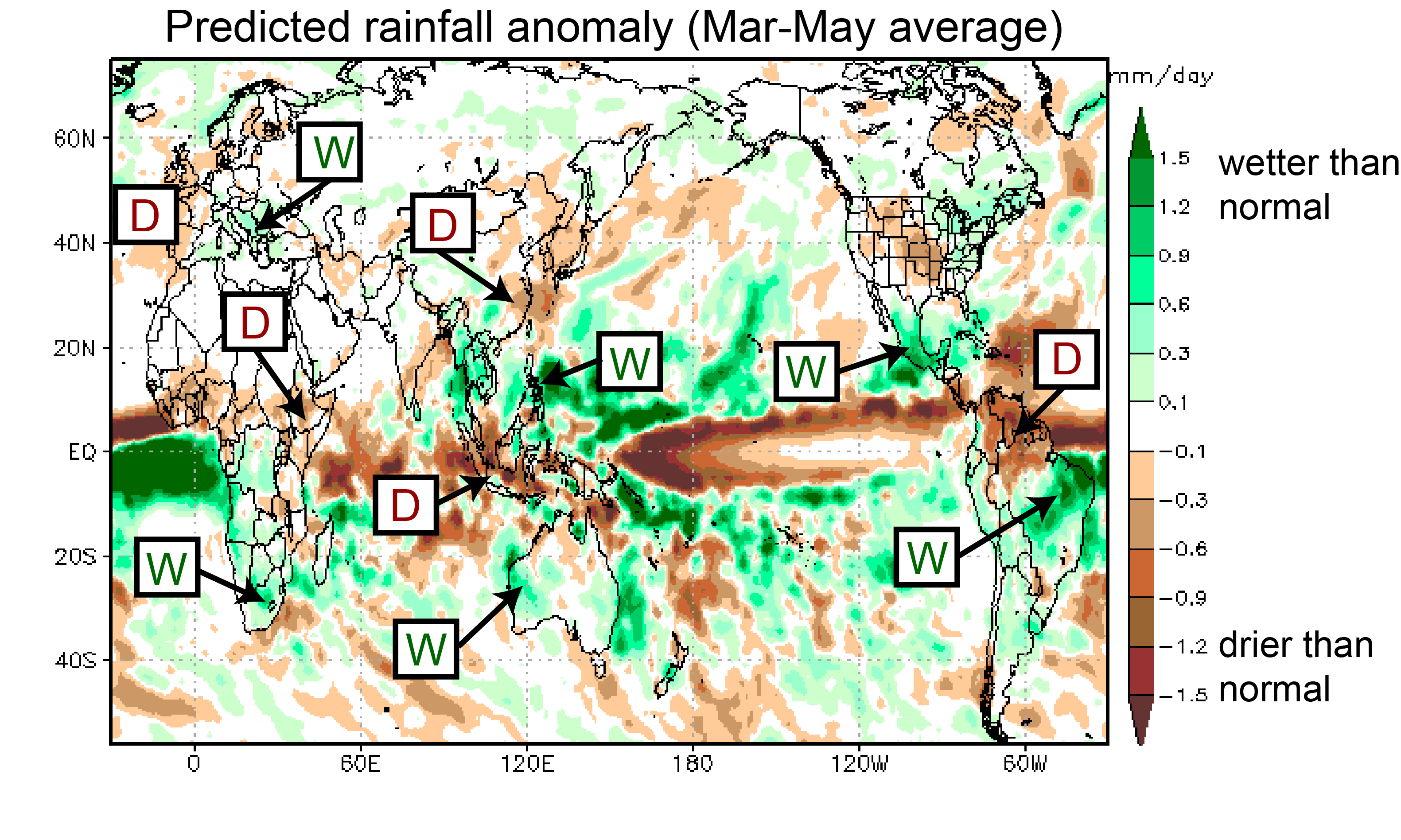
Rainfall is forecast to be above average in many areas, including central and southern Brazil, Mexico, southern Africa, western Australia, and southeast Asia. Drier than average conditions are expected in northern Brazil and northern South America, Indonesia, eastern China, East Africa, and western Europe.
For Japan, the model indicates warmer than average temperatures and drier than normal conditions. Please bear in mind though that the model’s forecast skill in the mid and high latitudes is limited.
Ocean temperatures for the period March through May
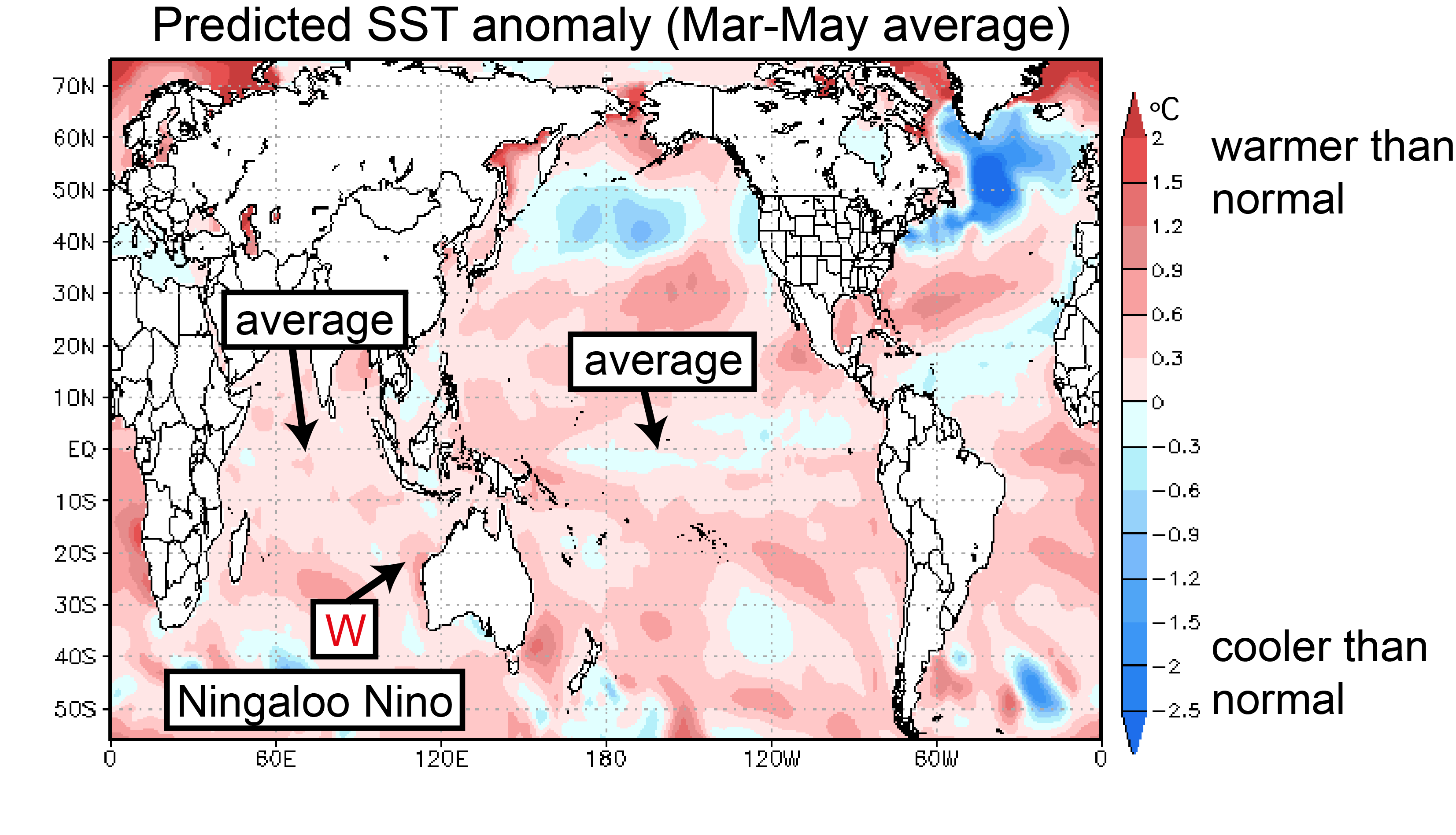
In difference to daily weather fluctuations, seasonal climate variations are strongly influenced by changes in sea-surface temperatures (SSTs). Particularly in the tropics, where the SSTs are warmer than in other regions, even small changes in temperature can produce far reaching effects.
According to the SINTEX-F prediction, the weak La Niña Modoki that developed last summer will terminate in spring, with conditions returning to average (Fig. 3). Likewise, the negative Indian Ocean Dipole that was present in summer and fall of last year will bow out and give way to average SST. Off the coast of northwest of Australia, on the other hand, ocean temperatures are expected to warm, leading to the development of a Ningaloo Niño event.
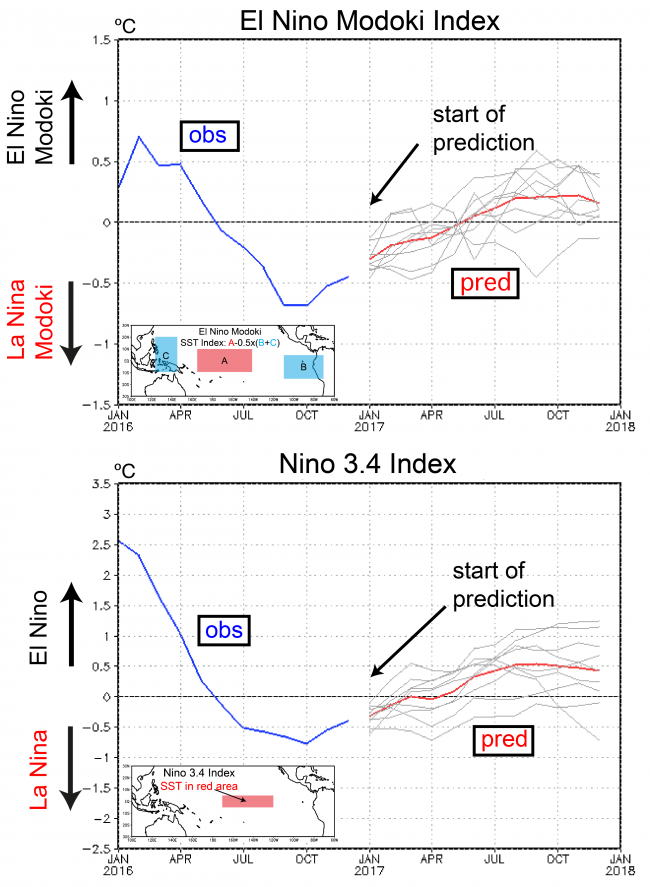
Next, let’s check the extended outlook for the tropics. Figure 4 shows two indices of interest. The El Niño Modoki index is predicted to decay during the next few months (red line in Fig. 4). Considering the more traditional Niño 3.4 index, it appears that temperatures will exceed the 0.5 ºC threshold in summer, indicating weak El Niño conditions. As we mentioned before, if indeed another El Niño were to develop in 2017 it would likely put an end to the spell of La Niña-like conditions that have prevailed over the last 10 years or so. Instead, we might be entering a prolonged period of El Niño-like conditions. This would most certainly mean the end of the so-called “hiatus” in global warming and usher in a period of accelerated warming.
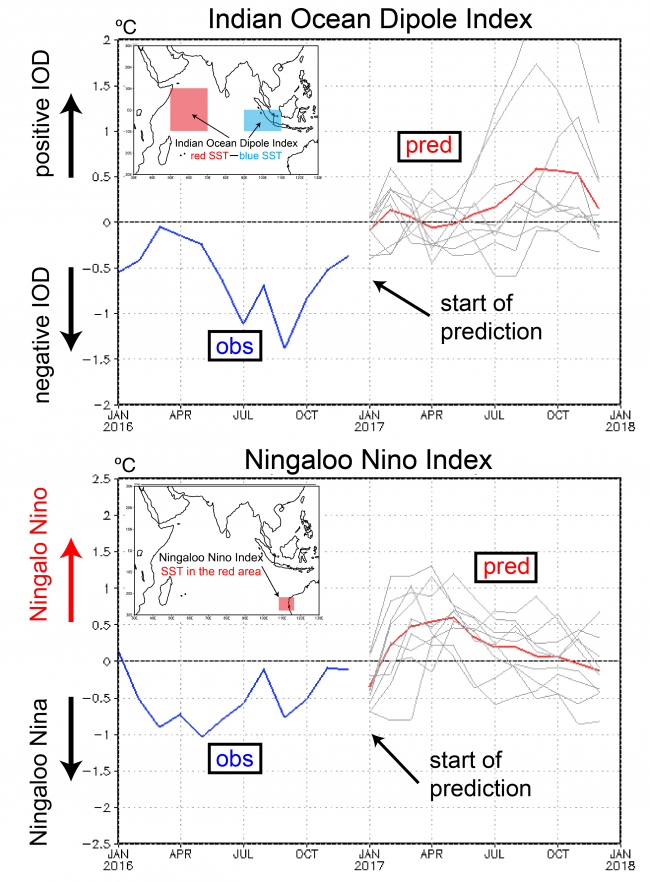
The IOD index is in rapid decay currently and will be around zero in spring. The model suggests that this will be followed by the development of a weak positive dipole event in the fall of 2017, with IOD index values just above 0.5 ºC. Note, however, that the ensemble members (grey lines) show a large spread, so confidence in this forecast is low at this point.
For the coast of western Australia, the Ningaloo Niño index indicates that sea-surface temperatures in the region will increase to +0.5 ºC in March, which would signify the occurrence of a Ningaloo Niño event. We’ll keep you posted.

